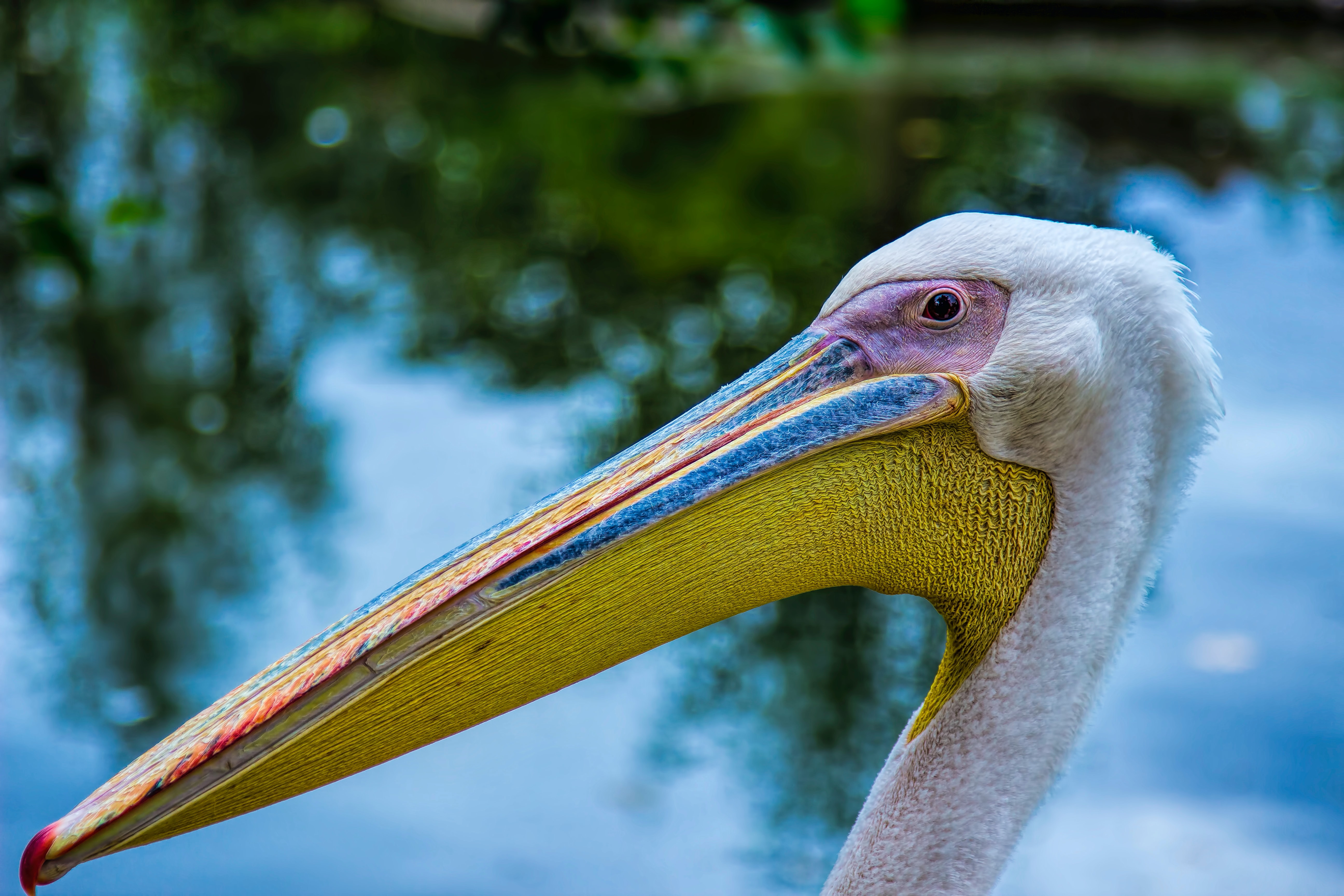
Gravitational Attraction
What would happen if two people out in space a few meters apart, abandoned by their spacecraft, decided to wait until gravity pulled them together? My initial thought was that …
In #programming

Pelican is a Python package for developing static websites. I started out my blog with Wordpress and then toyed with Wix and Weebly. But I found I didn't like the idea of a company holding my content -- if that company suddenly started to charge for the services, or disappeared altogether I didn't want my information caught in the middle. I also liked the control that a static site builder, like Pelican gives you. Finally, I like working in Markdown for my blog content (and most of my other content as well).
There are a lot of themes for Pelican to choose from, and although I have used some before I find them looking a little dated. So for the past few designs of this website what I've done is head over to Colorlibs Free Web Templates and find a template that looks good, like Elen, Miniblog, or Philosophy. For good measure, get a pelican theme to help with comparisons, something like Plummage. Make sure to have the Creating Pelican Themes site handy! After that, it's pretty straightforward to port the web template over to a pelican theme -- but I still do a lot of trial and error!
I think the satisfying parts of the developing a Pelican theme is to see years of articles instantly look like new. For example, in the Philosophy template index.html there is this snippet which presents the summary of a blog article,
<article class="masonry__brick entry format-standard" data-aos="fade-up">
<div class="entry__thumb">
<a href="single-standard.html" class="entry__thumb-link">
<img src="images/thumbs/masonry/lamp-400.jpg"
srcset="images/thumbs/masonry/lamp-400.jpg 1x, images/thumbs/masonry/lamp-800.jpg 2x" alt="">
</a>
</div>
<div class="entry__text">
<div class="entry__header">
<div class="entry__date">
<a href="single-standard.html">December 15, 2017</a>
</div>
<h1 class="entry__title"><a href="single-standard.html">Just a Standard Format Post.</a></h1>
</div>
<div class="entry__excerpt">
<p>
Lorem ipsum Sed eiusmod esse aliqua sed incididunt aliqua incididunt mollit id et sit proident dolor nulla sed commodo est ad minim elit reprehenderit nisi officia aute incididunt velit sint in aliqua...
</p>
</div>
<div class="entry__meta">
<span class="entry__meta-links">
<a href="category.html">Design</a>
<a href="category.html">Photography</a>
</span>
</div>
</div>
</article> <!-- end article -->
This is repeated once for many different articles, making for a long index.html file. In the pelican theme, the index.html loops over all of the articles and generates this long list using Jinja syntax,
{% for article in articles_page.object_list %}
<article class="masonry__brick entry format-standard" data-aos="fade-up">
<div class="entry__thumb">
<a href="{{ SITEURL }}/{{ article.url }}" class="entry__thumb-link">
{% if article.image %}
<img src="{{ SITEURL }}/images/{{ article.image }}">
{% else %}
<img src="{{ SITEURL }}/images/default.png">
{% endif %}
</a>
</div>
<div class="entry__text">
<div class="entry__header">
<div class="entry__date">
<a href="{{ SITEURL }}/{{ article.url }}">{{ article.locale_date }}</a>
</div>
<h1 class="entry__title"><a href="{{ SITEURL }}/{{ article.url }}">{{ article.title }} {%if article.subtitle %} <small> {{ article.subtitle }} </small> {% endif %} </a></h1>
</div>
<div class="entry__excerpt">
<p>
{{ article.summary}}
</p>
</div>
<div class="entry__meta">
<span class="entry__meta-links">
<a href="{{ SITEURL }}/{{ article.category.url }}">{{ article.category }}</a>
</span>
</div>
</div>
</article> <!-- end article -->
{% endfor %}
Notice the injection of Python here:
article.date and article.category, to put in article-specific informationThis provides a level of control that is hard to match.
To make the theme, as shown in the docs, you need to just make the following files
├── static
│ ├── css
│ └── images
└── templates
├── archives.html // to display archives
├── period_archives.html // to display time-period archives
├── article.html // processed for each article
├── author.html // processed for each author
├── authors.html // must list all the authors
├── categories.html // must list all the categories
├── category.html // processed for each category
├── index.html // the index (list all the articles)
├── page.html // processed for each page
├── tag.html // processed for each tag
└── tags.html // must list all the tags. Can be a tag cloud.
Starting from the free web template, I break off the parts that are included in all of the files and put it in base.html, copying the Jinja parts from a pelican theme. Like,
<!DOCTYPE html>
<html class="no-js" lang="en">
<head>
<!--- basic page needs
================================================== -->
<meta charset="utf-8">
<title>{% block title %}{{ SITENAME|striptags }}{% endblock title %}</title>
<meta name="description" content="">
<meta name="author" content="Brian Blais">
<!-- mobile specific metas
================================================== -->
<meta name="viewport" content="width=device-width, initial-scale=1, maximum-scale=1">
{% block head_links %}
<!-- CSS
================================================== -->
<link rel="stylesheet" href="{{ SITEURL }}/theme/css/base.css">
<link rel="stylesheet" href="{{ SITEURL }}/theme/css/vendor.css">
<link rel="stylesheet" href="{{ SITEURL }}/theme/css/main.css">
{% block extra_css %}{% endblock %}
<!-- favicons
================================================== -->
<link rel="shortcut icon" href="{{ SITEURL }}/favicon.ico" type="image/x-icon">
<link rel="icon" href="{{ SITEURL }}/favicon.ico" type="image/x-icon">
<!-- script
================================================== -->
<script src="{{ SITEURL }}/theme/js/modernizr.js"></script>
<script src="{{ SITEURL }}/theme/js/pace.min.js"></script>
{% endblock head_links %}
</head>
<body id="top">
{% include 'header.html' %}
{% block content %}
{% endblock content %}
{% include 'footer.html' %}
<!-- preloader
================================================== -->
<div id="preloader">
<div id="loader">
<div class="line-scale">
<div></div>
<div></div>
<div></div>
<div></div>
<div></div>
</div>
</div>
</div>
{% block script %}
<!-- Java Script
================================================== -->
<script src="{{ SITEURL }}/theme/js/jquery-3.2.1.min.js"></script>
<script src="{{ SITEURL }}/theme/js/plugins.js"></script>
<script src="{{ SITEURL }}/theme/js/main.js"></script>
{% block extra_js %}{% endblock %}
{% endblock script %}
</body>
</html>
which you can compare to the first and last parts of the index.html of the Philosophy template.
It took me about a week to iron out most of the nits to get the final version, but the process was just fun. There is something really satisfying about constructing something like a website by scripting. Every time I learn something new. One thing was to include {% block extra_css %}{% endblock %} and {% block extra_js %}{% endblock %} allowing some of the pages to include specific css and js files, which was instrumental in getting the tipue search working.
Questions about my process? Or any other part of this project, please contact me!